Macropod: description of fish, maintenance and care
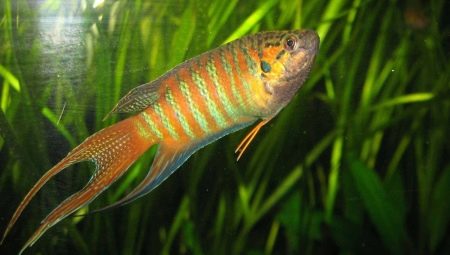
Macropods are very beautiful creatures that at first glance attract the attention of those around them with their classic red and blue color. However, their aggressive nature can make it difficult for beginner hobbyists.
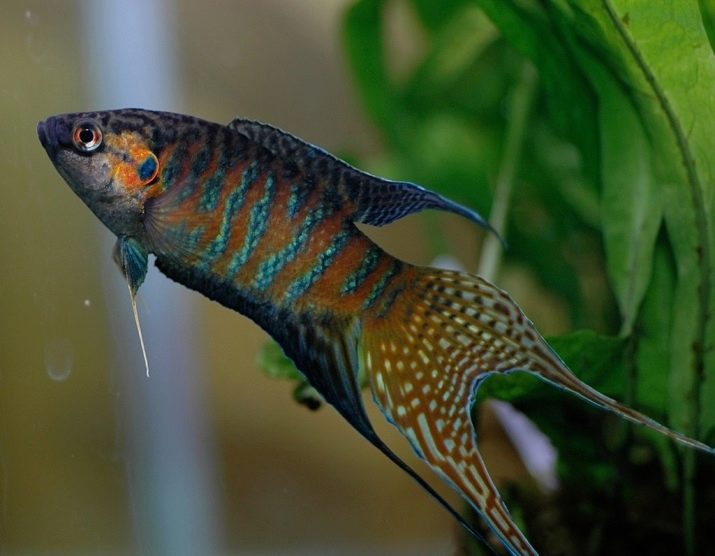
Peculiarities
Macropod is a fairly common aquarium fish from the labyrinth order. Her homeland is Korea, Taiwan, Vietnam and China. It looks bright and interesting, which explains the popularity of the creature among aquarists. The body of the pet is painted in a beautiful blue color and is covered with reddish stripes, the shade of which matches the shade of the fins. The shape of such a fish is rather elongated, with flat sides, but the fins are already pointed, except for the ventral, which is a thread. The size of the forked tail fin reaches an interval of 3 to 5 cm.
Macropods have the ability to absorb oxygen from the surface of the water with the help of special organs, the presence of which is characteristic of the entire labyrinth family.
This ability allows these fish to survive even in stagnant water bodies with low oxygen content. The length of males is about 10 cm, and of females - about 8 cm. The fish live for about 6 years, but if you take good care of them, you can extend this period to 8 years.
The character of the macropod is rather complex. This species of fish shows aggression not only in relation to other species, but also to its males. Females are more tolerant in this matter.

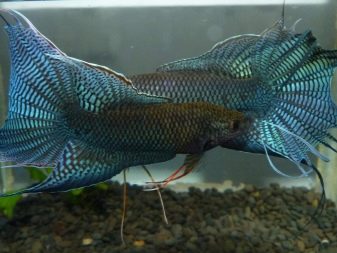
Varieties
Experts identify some types of macropods, the main difference between which is in color. The conditions of maintenance and the implementation of care for different macropods do not differ at all.
A classic or common macropod native to China. It can be identified by blue specks with brick-colored stripes located near the head and on the belly. The color has several options - it can be blue, changing to purple in the region of the back, or combined (brown body, blue head and red fins).
In addition, the classic macropod may turn out to be albino. In this case, his body will turn out to be white with yellow stripes, his fins will be painted in a pinkish tint, and his eyes will be red. Separately, there is such a variety of macropod as the red-backed one. It surprises with its beautiful silvery shade, red fins and matching back. The tail and back fin remain blue.
The black macropod is native to Vietnam. Its color ranges from dark gray to brown. The tail has a deep crimson color. The character of this species is much calmer than that of its relatives.


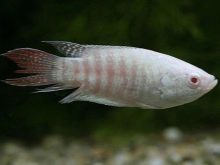
The Chinese macropod is often called round-tailed. Caring for him has its own specifics. For example, in winter, it is required to lower the temperature to 10 degrees. In addition, he quite often suffers from microbacteriosis, which requires appropriate measures.
Compatibility
Macropods do not get along in an aquarium with all representatives of the underwater world. Most often, they show aggression with other fish, so you should be especially careful when choosing neighbors. In this case, it is better to give preference to active creatures of the same size and strength.
Macropods cannot be lodged with weak and peaceful creatures, as this will create an unequivocal danger for the latter.
In addition, the family of goldfish, as well as guppies and the like, is under a mandatory ban.
It is best to settle macropods in pairs or combine one male and several females. You can settle them with other fish if the aquarium is large and equipped taking into account the interests of all its inhabitants, and the neighbors are quick and not aggressive. They can be peaceful barbs, gurus, lalius or tetras.
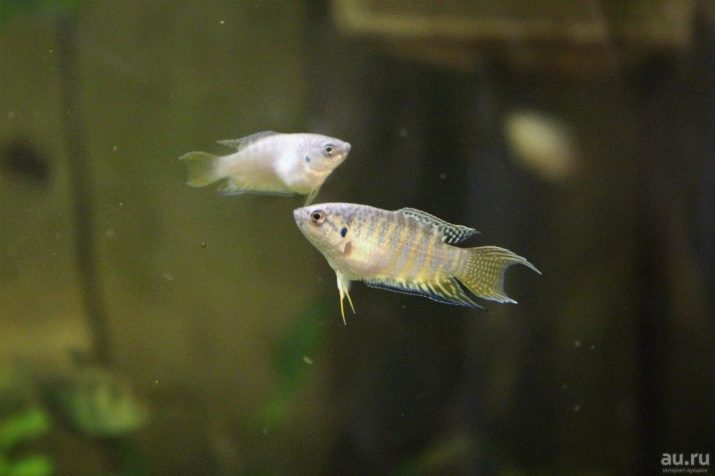
Growing conditions
Keeping macropods at home is not particularly difficult. The water temperature should be maintained at 18-25 degrees Celsius, and the pH level should vary between 6.0-7.5. The optimum water hardness is 5-19 dGh. All the care of pets consists in the correct equipment of the aquarium, its further maintenance in optimal condition and feeding. You can choose a small aquarium in terms of spaciousness. One fish should have about 20 liters of water, and for a couple, 40 liters of liquid are required.
The aquarium should be equipped with a lid, as the macropod tends to jump out of it. In order for the division of the territory to go smoothly, it is recommended to create a rather large opening for each individual. It is important to place them on different sides of the tank.
It is necessary that the movement of water in the aquarium is either completely absent or minimal. To ensure the stable growth and development of creatures, at least once a week, part of the water has to be renewed (from 20% to 25%). The liquid should always be used settled and at the same time have the required hydrochemical composition.
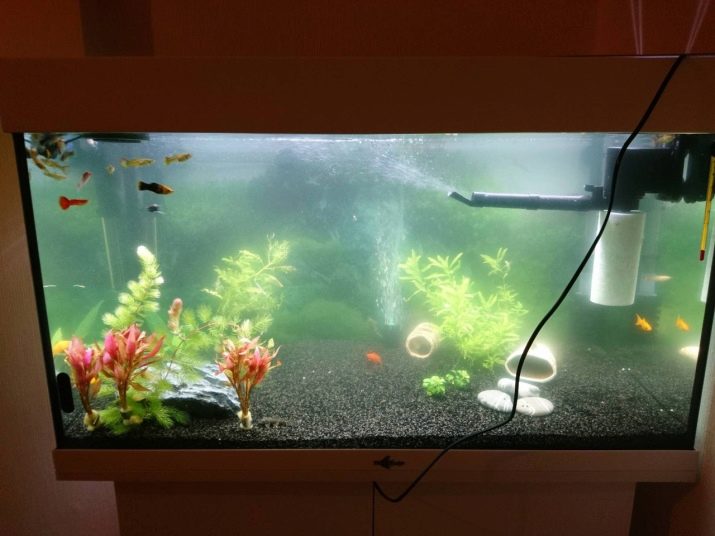
It is advisable to equip the container with floating plants, as well as plants with a strong and branched root system. These are crops such as duckweed, pistia and salvinia. Greens need to be thinned regularly, as otherwise some specimens will begin to block other access to oxygen.
The soil should be chosen dark, since it does not provoke stress in the fish and at the same time is a winning background for bright inhabitants.
Before filling the aquarium, the soil mixture must be boiled and then cleaned daily with a siphon.
When choosing a decor for a tank of domestic inhabitants, preference should be given to objects made from natural materials. Besides, fixtures that are painted with dyes should be avoided - they can be toxic and provoke illness, as well as death of pets. It is advisable to choose a low-power filter used, since it is important for macropods to avoid strong waves of water. It is better to refuse a heater and a compressor if the fish live without neighbors. They feel great at a water temperature of 18 degrees and do not require additional aeration of the water.
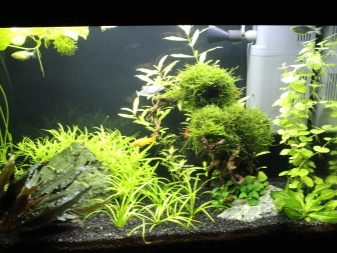

Lighting should be chosen depending on the requirements of the planted plants. Daylight hours should not exceed 12 hours, and the light should not be too bright. The lighting should be turned off at night. On sunny days, you will have to make sure that natural light does not fall on the walls of the aquarium, and the water does not overheat.
Labyrinth fish have an innate immunity to common diseases, so the reason for their poor health is only improper care or conditions of detention. Tuberculosis occurs when the reservoir is not cleaned regularly. Unfortunately, this disease is practically not cured. Parasites appear from poorly processed food, plants or soil. In this case, carp lice or nematodes enter the aquarium, which negatively affects the domestic inhabitants. To eliminate the parasitic disease, you will need to use special drugs or potassium permanganate, you can also add piperazine to the food of your pets.
Fin rot in fish can only be cured with antibiotics. If the appropriate measures are not taken, their fins will literally collapse. Ichthyophthyroidism is easy to calculate by the appearance of white dots on the surface of the body of the fish. To treat the disease, you will need to increase the temperature in the aquarium, as well as use special preparations.
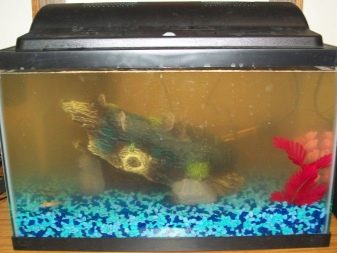
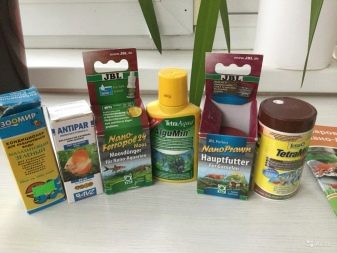
What and how to feed?
Feeding your pets is pretty simple. In nature, the fish eats almost everything, but gives preference to animal food: fry and other aquatic inhabitants. Sometimes the creature is ready to jump out of the water to catch potential food. At home, the macropod can be offered special flakes, pellets or specialized feed for cockerels. Frozen or live foods such as bloodworms, tubifex, brine shrimp, black mosquito larvae are encouraged. Frozen feed will have to be thawed before serving.
Live variants must be disinfected in a solution of potassium permanganate. When choosing ready-made feed, it is worth giving preference to formulations containing carotene. This substance has a beneficial effect on the color of the scales and fins, preventing them from fading over time. From time to time, fish can be fed with homemade minced meat.
In any case, it is important that the fish diet is varied and balanced.
Feed the macropod twice a day, but in small quantities, since the pet is prone to gluttony.
Excess food must be removed immediately.
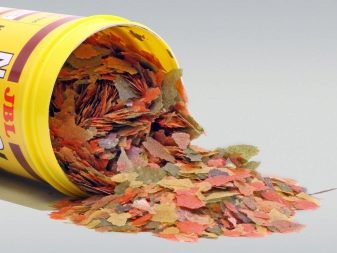
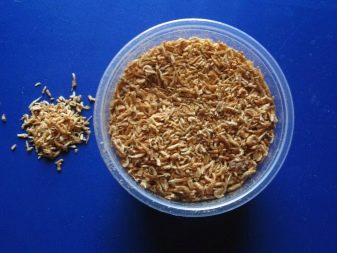
Sex differences and reproduction
Breeding macropods at home is simple. Of the preparatory measures, only the organization of a spawning grounds will be required. Directly in the aquarium, the temperature should gradually rise to a range of 26-28 degrees. With the use of peat, marble chips or special chemicals, the pH level in this case changes to 6.
In addition, the liquid level rises to 20 cm, and additional shelters should be located inside the aquarium: either grottoes or thickets of floating plants. Before breeding, the diet of macropods is replaced by a meat one.
To distinguish a male from a female, you will need to carefully examine them. The male body looks slimmer by a few centimeters. There are also differences in color - in males it is much brighter. In addition, the fins of males appear longer and sharper, while in females they are slightly rounded and short. During spawning, the male builds a nest from plant fragments and air bubbles practically on the surface.
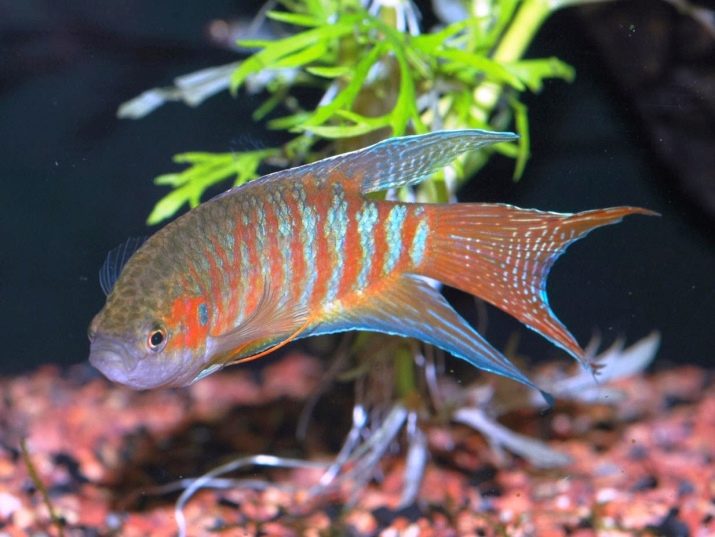
During this period, it is necessary to move the females to another reservoir, since aggressive males can cripple them. As soon as the nest is completed, the females can be returned back so that they can start throwing eggs. The male will take care of the incoming eggs - he will transfer them to the nest, and then take care and protect until the offspring appear. Females at this time are best planted.
As a rule, one female individual gives about 500 eggs, which ripen from 3 to 5 days. It is important to remember: as soon as the fry appear, the male will stop considering them as his offspring and can easily eat them. For this reason fry and adults should be kept in separate containers. It is customary to feed the fry with ciliates, microworms and boiled egg yolk.
Tips for grooming, feeding and breeding macropods in the video below.








